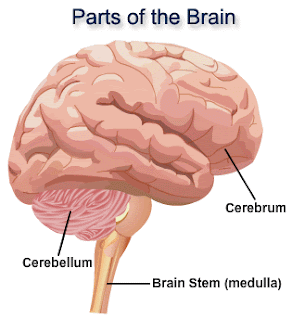Hemophilia
To be pronounced as –‘heem-o-FILL-ee-ah’
Hemophilia is a rare single gene, X- linked disorder, which tends to run in families.
In this bleeding condition, clotting of blood fails to take place in a normal manner. Following an accident, hemophilics suffer excessive bleeding, as it takes longer to heal, in comparison to normal individuals. This is due to a
faulty clotting mechanism. Internal bleeding may also occur leading to organ damage, which may ultimately prove fatal.
Hemophilia is a condition, which
only affects the males because it is an X-linked disorder. Males have only one X chromosome on which they carry a single copy of the Hemophilia gene, unlike the females who have two X chromosomes. If a mutant copy of the hemophilia gene is present, then males develop the disease. Women on the other hand, are non-symptomatic
carriers.
 Hemophilia-Pattern Of Inheritance
Hemophilia-Pattern Of InheritanceHemophilia A is known to affect one in every 5000 males. Hemophilia B occurs in one out of every 25-30 thousand male births. In the United States 18,000 people have hemophilia.
Causes Due to an
inherent gene defect, individuals with hemophilia are born with little or no ‘clotting factors’. These are proteins that are vital for blood clotting.
Hemophilia can also be
acquired during a person’s lifetime when antibodies are developed against these clotting factors.
There are two types of hemophilia.In individuals with
Hemophilia A there is very low amount of, or a complete absence of, a clotting factor VIII, while in those with
Hemophilia B, there is an absence of clotting factor IX. In the case of
Hemophilia C, there is an absence or very little of the clotting factor-XI. When an injury occurs, platelets play a lead role in stopping the blood flow. These platelets are joined together with the help of the clotting factors. So an insufficient quantity or absence of these factors will prevent clotting.
Clinical features There are three different types of hemophilia, depending on the amount of clotting factors present involved. The disease can be classified as mild, moderate or severe depending on the amount of protein present. Seven out of every ten hemophiliacs suffer from the severe type of disorder.
a) Mild:5 to 40 % of normal clotting factor.A mild bleeding present.
b) Moderate:1 to 5 % of normal clotting factor.Heavy bleeding following injury
c) Severe:1% of normal clotting factor.Spontaneous bleeding in skin, joints and muscles
Bruising usually involves the ankle, knees, hips, and elbows and intra cranial bleeding.
Treatment There is no cure for hemophilia. Treatment involves supplying the deficient clotting factor though infusion. If the patient stops responding to treatment after a period of time, then the dose of the factor administered needs to be increased or, alternatively, non-human factors should be tried. Recombinant, genetically- engineered products can also be administered to patients who are refractory.
People who suffer from hemophilia are recommended to do certain exercises pertaining to the elbows, knees and ankles. They can even do certain specific exercises that can bring relief to their joints, on a regular basis.
Genetic Testing for hemophilia:If the mother is a known carrier, Chorionic Villi sampling or amniocentesis can be done to determine the sex of the child. Clotting factor assay can be carried out using umbilical cord blood assay. The parents can then take an informed decision regarding continuation of pregnancy depending on whether the child is a male or a female.
Bleeding is the most important sign for hemophilia. In children or in adults, showing abnormal bleeding coagulation tests to detect and confirm the absence of coagulation factors and also to assess the type of hemophilia. Other forms of genetic tests with an increased specificity can also be done to confirm the diagnosis,if required.



 Usually the first signs of puberty in most girls are associated with the development of the breast. Along with this, one can often expect the onset of pubic hair and hair of the arm pit.
Usually the first signs of puberty in most girls are associated with the development of the breast. Along with this, one can often expect the onset of pubic hair and hair of the arm pit.

 Breast Feeding
Breast Feeding



 The Human Brain
The Human Brain
 There are several different types of boils. Among these are:
There are several different types of boils. Among these are:

 A blood group individuals will have type A antigens on the surface of red blood cells and anti-B antibodies in plasma. There are about 20 different subgroups of which A1 and A2 subtypes are the most common.
A blood group individuals will have type A antigens on the surface of red blood cells and anti-B antibodies in plasma. There are about 20 different subgroups of which A1 and A2 subtypes are the most common.






 BedWetting
BedWetting